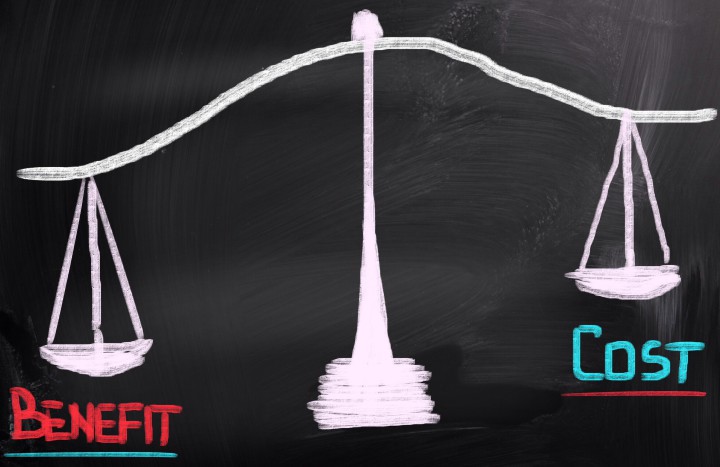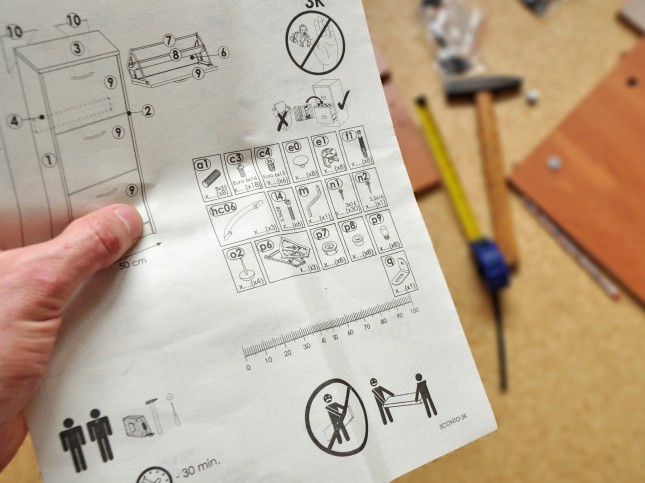The Economics of Lean Communication
In a free market, companies create profits for themselves by creating value that others are willing to pay for, in excess of their costs of production. If they want to generate more profits, they must either increase the value or reduce their costs, and this focus on the bottom-line forces a customer-centered discipline. Before introducing a new product, they have to think carefully about whether customers will buy it, and whether they can produce it profitably. To help them, many companies have adopted the lean production as a framework for constantly looking for ways to maximize value and minimize waste.
When their customers consider whether to buy their products, they measure the value they receive in terms of ROI, which simply is a division problem, with Return on top and Investment on the bottom. While there is always a lot of gray area in deciding what results and costs to include in the calculation, it’s still a reasonably straightforward way of prioritizing how to invest their limited capital.
We all take this for granted when it comes to business, but is it possible that we forget it when we communicate? Just as companies don’t pump out products unless they think they’ll sell, we should not just pump out words without thinking about whether they are worth listening to. Will listeners be willing to pay the price in time and effort to hear what you have to say?
It may seem like a no-brainer, but if you’ve ever sat through an interminable and unproductive meeting, and calculated the total opportunity cost of everyone in that room, if you’ve had to wade through hundreds of emails to glean actionable information, if you’ve worked hard to decode what someone is really saying, if you’ve had to tolerate a chatty co-worker when you’re in a hurry, you know how rarely people think about communication in this way.
Maybe one reason is that we don’t consider the costs of communication. In a world where it is so easy to communicate instantly and electronically, it would seem that talk is cheaper than ever. But the real cost is the hidden opportunity cost: what is the combined value of the time that is used by speaker and audience, including all the process steps from composing the thoughts, writing/speaking, transmitting and discussing?
Return on Time and Effort
Is there an economic value to business communication, and if so, can it be calculated?
It’s much more slippery to pin down the return on communication, but we can at least try to measure the unmeasurable by applying the same thought process as ROI. I call it RoTE, or Return on Time and Effort.
Return: What value does your audience receive from listening to you? We measure value in lean communication in terms of outcomes and results. When the information shared improves a decision or leads to effective action that generates measurable outcomes, you could theoretically put an actual dollar value on that conversation or presentation. Of course, that’s tough to measure, especially since most decisions are the results of not just one single communication, but of countless conversations, presentations, messages going back and forth, etc. But still, it’s one of those things that people know when they see it or hear it. It’s also important to note that value is defined by the listener, not the speaker.
Practically and mathematically, R is the most important factor in the equation. If it’s zero or negative, no amount of brevity or clarity will make the communication worthwhile, and if it’s high enough, almost any amount of time and effort will be worth devoting to it.
That said, it’s still important to concentrate on the denominator of the equation. Unlike ROI, in which the investment is only calculated in dollars, communication requires the investment of two costly currencies: attention and cognitive effort.
Time is of course the most easily measurable factor. How much time do you take in getting your message across? Do you get right to the point, or do you overload your listeners with information they already know, do you hold back vital information out of fear of offending, do you have trouble resisting interesting but irrelevant snippets and trivia?
The paradox of brevity is that it takes time to produce. When Mark Twain received this telegram from a publisher:
NEED 2-PAGE SHORT STORY TWO DAYS
He sent back this reply:
NO CAN DO 2 PAGES TWO DAYS. CAN DO 30 PAGES 2 DAYS. NEED 30 DAYS TO DO 2 PAGES
So, there is a cost/benefit analysis you have to run through your mind: is there any net value added when you invest your time to save time for the listener? The answer is almost always yes, first because when you are presenting to audiences of more than one person, it’s easy to see that an extra hour of preparation to shorten your presentation can pay off in multiples, especially when you are presenting to higher-level people whose opportunity cost of listening can quickly add up to big numbers. Second, the thinking you put into effort of making things brief carries over to the next part of the equation, effort.
Effort is harder to measure but no less important than time. The simple truth is that thinking is hard work, and we generally avoid doing any more than is absolutely necessary. As with brevity, you work hard so they don’t have to. The harder you make people work to understand what you’re saying, the more of their time you take and the less value you add to them.
By making it easy for them to understand, you also do yourself a favor, because they will be much more likely to repay you by accepting your logic. Make your “product” user-friendly by making your reasoning transparent, using plain language that all can understand, and illustrating your reasoning with stories, analogies, visuals and concrete examples.
Building equity
When companies create profits, they build equity which strengthens their balance sheets and provides resources to generate future profits. It’s the same way with personal communication. As you build a reputation for delivering good value through lean communication, you are building personal equity in the form of credibility.
Credibility can lead to the Matthew Effect, the idea that the rich get richer. By consistently delivering a Return, at low cost in time and effort, you will generate greater trust, with more decision makers who will require less verification of your arguments and facts, and accordingly save time over the long run—for yourself and for others. That is priceless, whether you can put a dollar value on it or not.







[…] to deliver maximum value for minimum effort, or increase the Return on Time and Effort (RoTE). Put another way, you can either increase the payoff from attention, or reduce the […]